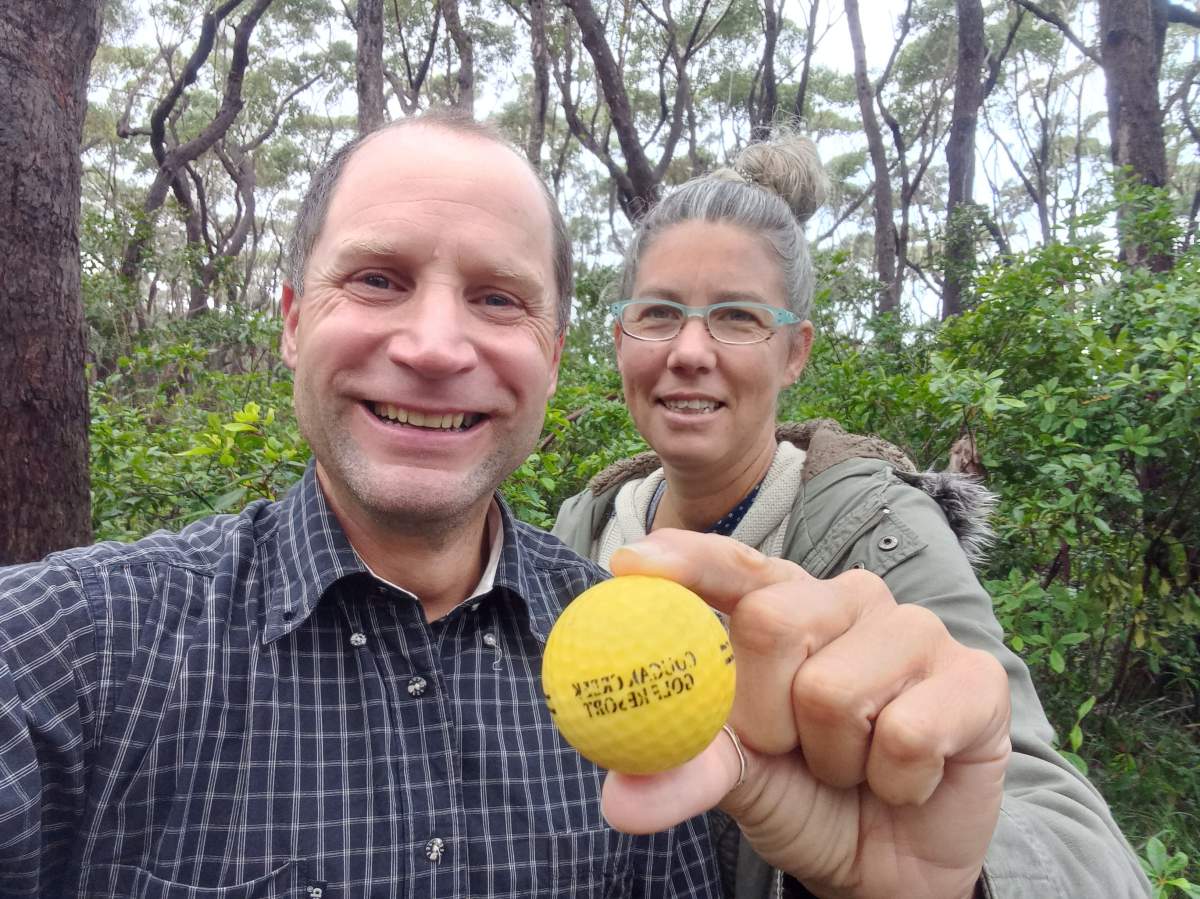Jake Behiels and Robert Annesley have been waiting to meet for almost two months now, all because of a weathered old golf ball.

While Behiels was seated in his office at the Cougar Creek Golf Resort in Parkland County, Annesley was 12,000 kilometres away — safely tucked under his tent at a rainy campsite in Australia.
On the day of their interview with Global News, the two were formally introduced via a video chat, where they laughed and exchanged greetings.
“Nice to meet you Robert,” Behiels said. “Likewise,” Annesley replied. He held up a pale yellow, lightly weathered driving range ball — dimples still intact.
“Here she is, right here,” Annesley said rather excitedly. The lettering on the ball — Cougar Creek Golf Resort — was easy enough to read.
Annesley is an out-of-work sign manufacturer whose employer recently sold the business, so the 49-year-old had some time on his hands.
That’s how Annesley and his wife found themselves on a road trip to hike the entire continent of Australia.
“If you’re going to see the world and its natural beauty — all the wonderful designs that have been given us — the best way to do that is at walking speed,” Annesley said.

Annesley made the discovery during a hike on Hinchinbrook Island, a national park in the northeastern Australia state of Queensland.
“I noticed something out of the corner of my eye, like this yellow colour — which against the background, just stood out.”

Get breaking National news
He said he looked down at a hollowed-out log and saw the ball inside it.
“I was a bit stunned, I couldn’t believe it. It seemed absurd, that I would find a golf ball there.”
Annseley looked astonished as he talked about the indestructible little ball, “that it somehow got into the waterways, somehow landed in the Pacific, on the western seaboard of North America, made its way across the Pacific and got washed up 500 metres up from the beach, on a remote little island in far north Queensland.”
“The most absurd possibility seemed the most likely.”
Behiels is a golf pro and general manager at Cougar Creek, which about 45-minutes west of Edmonton on Highway 16.
The course opened in 1996 and caters to public golfers and charity tournaments. An aquatic driving range is among its amenities, so the practice balls float. Players hit them into a pond and when the day is done, Cougar Creek staffers go fishing with a boat and a net.
Behiels estimates there are 5,000 to 7,000 range balls at the course: “We pick them up every night, clean them and put them back out.”
Hinchinbrook Island is an uninhabited area that can only be reached by boat, driven by a park ranger. Yet somehow, one of those Cougar Creek range balls went on the world’s longest drive — 12,250 kilometres.
“It makes your imagination wander,” Behiels said.
When Annesley found his rare piece of gold, he went searching to find out where Cougar Creek Golf Resort was.
“When I Googled ‘Cougar Creek’ and saw it was in the middle of Canada, I thought, ‘That’s ridiculous,'” he said, laughing.
That’s how he tracked down Behiels, emailed him the story and sent pictures of the golf ball to try and compare the look and the lettering.
“When Jake showed me that golf ball, I’m amazed — the balls look identical,” Annesley said.
Behiels shook his head when he said, “to hear about where exactly it was found and how wild it was … that it actually got there is remarkable.”
Even more remarkable is the resiliency of the ball. Behiels doesn’t know the brand, but he estimates the ball could be 15 years old.
Meanwhile, Annesley was astonished the ball survived its journey across typhoon-prone waters.
“Whoever the manufacturer of your golf balls is, he’d want to know he’s made a jolly good product.”
Which Annesley says also makes for a jolly good story.
“I still find it quite funny that I got to speak to some gentlemen on the other side of the world about a golf ball.”













Comments